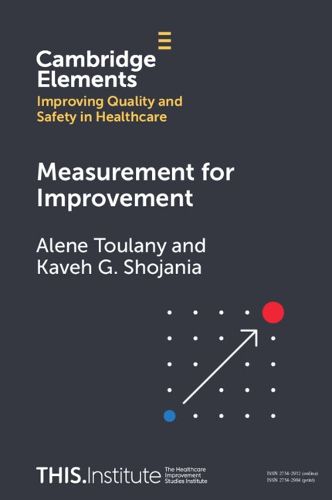Readings Newsletter
Become a Readings Member to make your shopping experience even easier.
Sign in or sign up for free!
You’re not far away from qualifying for FREE standard shipping within Australia
You’ve qualified for FREE standard shipping within Australia
The cart is loading…






The main principles underpinning measurement for healthcare improvement are outlined in this Element. Although there is no single formula for achieving optimal measurement to support improvement, a fundamental principle is the importance of using multiple measures and approaches to gathering data. Using a single measure falls short in capturing the multifaceted aspects of care across diverse patient populations, as well as all the intended and unintended consequences of improvement interventions within various quality domains. Even within a single domain, improvement efforts can succeed in several ways and go wrong in others. Therefore, a family of measures is usually necessary. Clearly communicating a plausible theory outlining how an intervention will lead to desired outcomes informs decisions about the scope and types of measurement used. Improvement teams must tread carefully to avoid imposing undue burdens on patients, clinicians, or organisations. This title is also available as Open Access on Cambridge Core.
$9.00 standard shipping within Australia
FREE standard shipping within Australia for orders over $100.00
Express & International shipping calculated at checkout
The main principles underpinning measurement for healthcare improvement are outlined in this Element. Although there is no single formula for achieving optimal measurement to support improvement, a fundamental principle is the importance of using multiple measures and approaches to gathering data. Using a single measure falls short in capturing the multifaceted aspects of care across diverse patient populations, as well as all the intended and unintended consequences of improvement interventions within various quality domains. Even within a single domain, improvement efforts can succeed in several ways and go wrong in others. Therefore, a family of measures is usually necessary. Clearly communicating a plausible theory outlining how an intervention will lead to desired outcomes informs decisions about the scope and types of measurement used. Improvement teams must tread carefully to avoid imposing undue burdens on patients, clinicians, or organisations. This title is also available as Open Access on Cambridge Core.